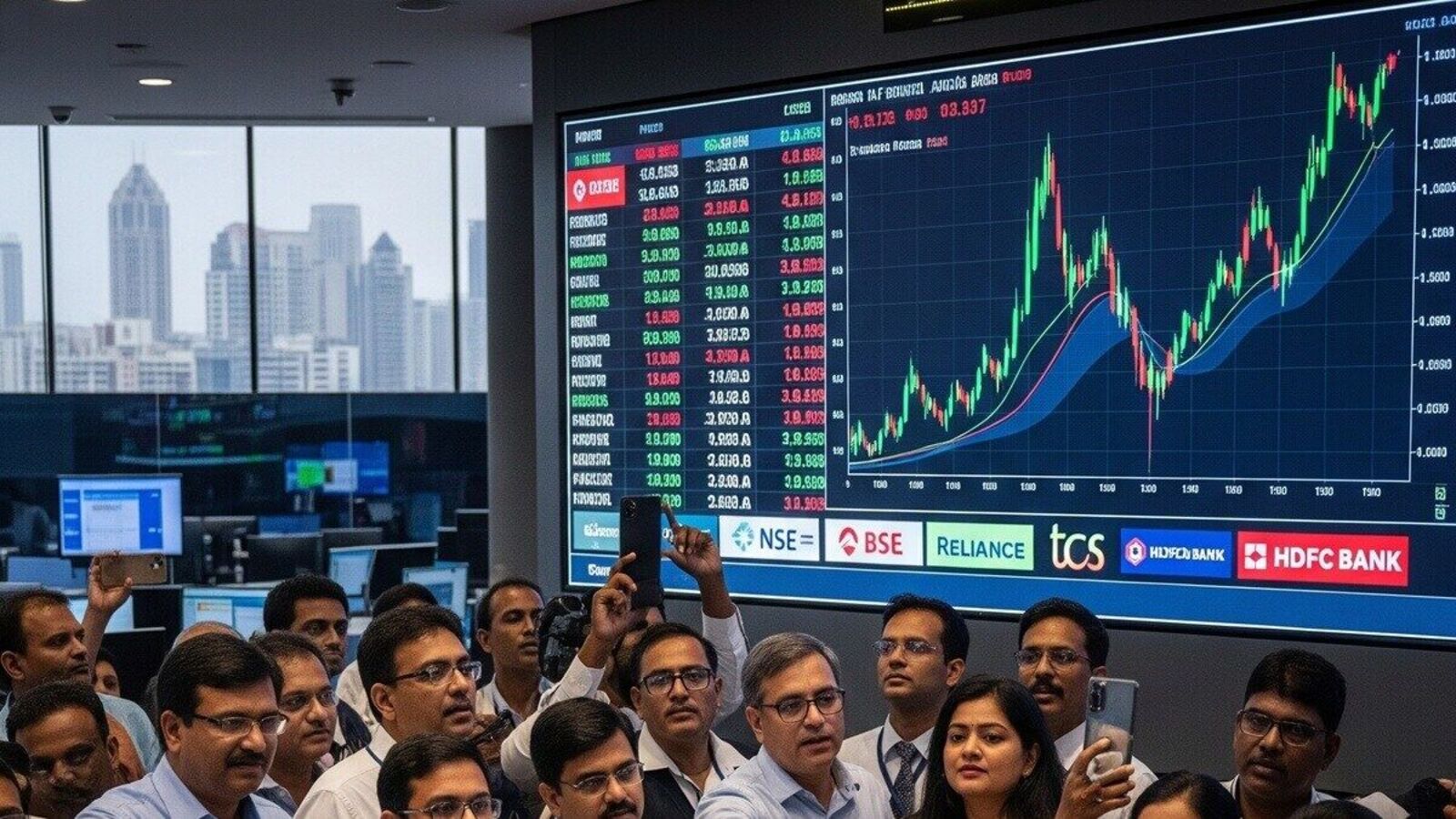Indian stock market next week: largely stable Q2 results, signs of FIIs (foreign institutional investors) coming back to the Indian stock market, and the dollar’s weakness propelled Indian stock market benchmarks- the Sensex and the Nifty 50- to their 52-week highs during the week ended Friday, October 17.
The Sensex and the Nifty 50 extended their gains to the third consecutive session; for the month, the Sensex is up 4.6 per cent and the Nifty 50 has gained 4.5 per cent.
“The rally was underpinned by strength in consumption-driven sectors and a broad-based recovery across realty, healthcare, and banking. Investor confidence was further buoyed by easing concerns around asset quality in the financial sector and expectations of improved volume growth in the festive quarter,” said Vinod Nair, the head of research at Geojit Investments.
The coming week is a truncated one. Trading on the BSE and the NSE will be closed on Tuesday, October 21, for Diwali and Laxmi Pujan, and on Wednesday, October 22, for Diwali Balipratipada.
Muhurat trading will be conducted on Tuesday, October 21, from 1.45 pm to 2.45 pm.
5 key triggers for the Indian stock market next week1. News flows on US tariffs, trade deals
News flows on US tariffs on China, and signals of a potential trade deal between India and the US will act as major triggers for the domestic market.
The market, which is already at a 52-week high, may attempt to reach record highs if India and the US signal the possibility of a favourable trade deal.
Commerce Minister Piyush Goyal on Saturday said that talks regarding the proposed India-US bilateral trade agreement are “progressing in a cordial manner.”
Meanwhile, US President Donald Trump on Friday, October 17, said the proposed 100 per cent tariffs on China would be unsustainable. He hoped that the US-China ties would be fine when he meets President Xi Jinping in South Korea in two weeks.
2. Q2 earnings
The Indian stock market will react to Q2 results of several heavyweights, including Reliance Industries, HDFC Bank and ICICI Bank.
“Market participants will first react to quarterly earnings from heavyweights such as Reliance Industries, HDFC Bank, and ICICI Bank, which are likely to set the tone for the broader market,” said Ajit Mishra, the SVP of research at Religare Broking.
In the coming week, the markets’ focus will also be on HUL, SBI Life Insurance Company, Dr Reddy’s Laboratories, and SBI Cards and Payment Services, as they will announce their September quarter earnings.
So far, the Q2 results of major Indian corporates have been largely on expected lines.
Experts believe an in-line Q2 result season will support market sentiment, triggering stock and sector-specific action in the market.
3. FII trends
FIIs have started buying Indian stocks this month. They have been net buyers in the Indian stock market in the cash segment for the last three consecutive sessions.
The recent FPI activity indicates improved sentiment in the Indian stock market. However, experts say corporate earnings and stable global conditions will be key for the foreign capital inflow trend to sustain.
“With FY26 earnings expected to grow around 8 per cent (Nifty EPS nearly ₹1,096) and valuations now near long-period averages at nearly 20.6 times one-year forward P/E, conditions are normalising. From Q3FY26 onward, as corporate earnings recovery gains traction and growth broadens across sectors, we expect the tide in foreign flows to shift,” said Nandish Shah, AVP – PCG Research and Advisory (Fundamental), Wealth Management, Motilal Oswal Financial Services.
4. Rupee’s movement
The rupee ended 6 paise lower at 88.02 against the US dollar on Friday. For the week, the domestic currency rose by about 1 per cent against the US dollar.
On the monthly scale, the rupee is up about a per cent after falling for five consecutive months.
“The Indian rupee staged a sharp rebound this week after the Reserve Bank of India (RBI) stepped up its intervention to counter what it perceived as speculative pressure on the currency. The RBI actively sold dollars in both onshore and offshore markets after the rupee neared the 89-per-dollar mark, a level viewed as a critical threshold,” Riya Singh, a research analyst of commodities and currency at Emkay Global Financial Services, observed.
“The RBI’s aggressive action, including dollar sales in spot and forward markets, triggered a nearly 1 per cent rally in the rupee—its biggest two-day gain in four months—bringing it to around 88.07 per dollar. The RBI is expected to continue intervening until speculative positions unwind completely,” Singh said.
For now, Singh expects the rupee to trade sideways amid upcoming holidays, but sustained foreign inflows and progress on trade talks could help it strengthen further in the coming weeks.
If the rupee gains further, it may facilitate foreign money inflows, boosting the market sentiment.
5. US CPI inflation prints
US September CPI numbers, due to come out Friday, are a key data point that will be in focus of the market in the coming week.
The US federal shutdown, which started on October 1, has delayed key macro data. However, according to Reuters, “the government plans to publish September CPI prints, allowing the Social Security Administration to meet deadlines related to payment of benefits.”
The CPI numbers will influence market expectations about the size of the US Fed rate cut this month. The US Federal Reserve is expected to cut rates by 25 basis points in its October 28-29 meeting.
Read all market-related news here
Read more stories by Nishant Kumar
Disclaimer: This story is for educational purposes only. The views and recommendations expressed are those of individual analysts or broking firms, not Mint. We advise investors to consult with certified experts before making any investment decisions, as market conditions can change rapidly and circumstances may vary.

